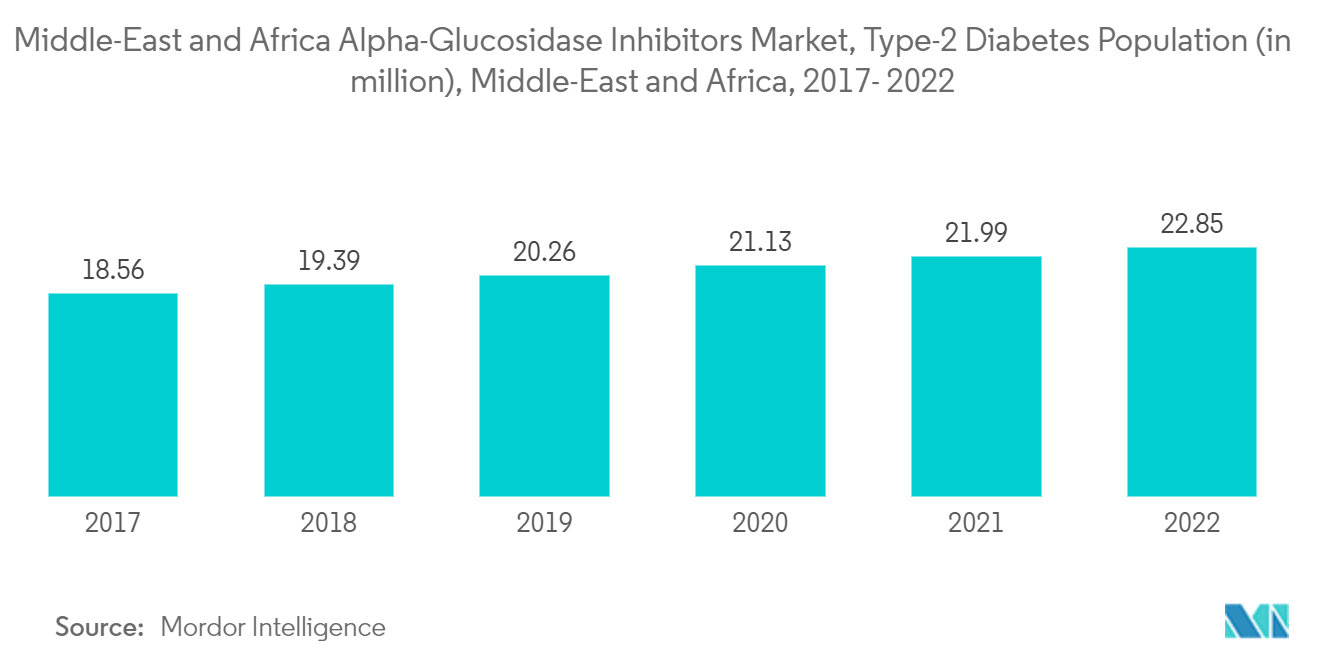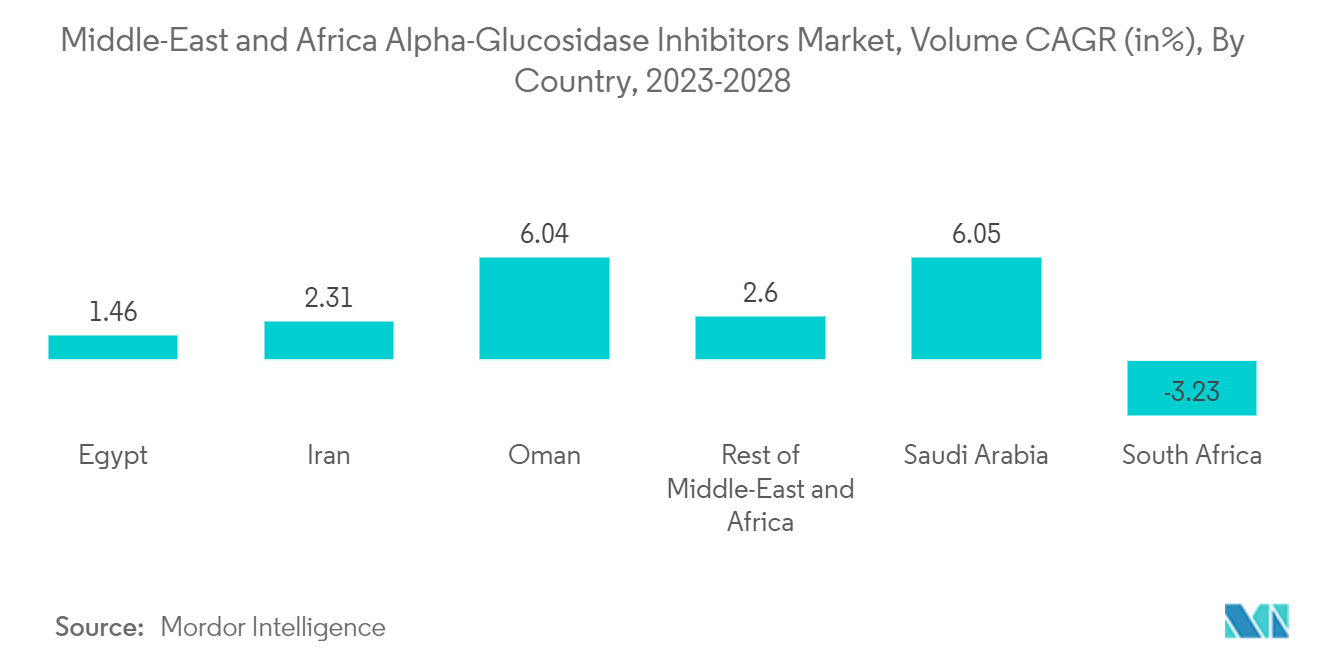Market Trends of Middle East and Africa Alpha-Glucosidase Inhibitors Industry
Rising Diabetes Prevalence in Middle East and Africa Region
Type-1 diabetes accounts for approximately 10% of diabetes cases in the Middle East and Africa, while type-2 diabetes accounts for 90%. Type-1 diabetes patients must take insulin for the rest of their lives while also eating a healthy diet and exercising regularly. Type-2 diabetes patients must eat healthily, stay physically active, and have regular blood glucose tests. They may also need to take oral medication and insulin to keep their blood glucose levels under control. Diabetes has many complications, including diabetic ketoacidosis and nonketotic hyperosmolar coma. Heart disease, stroke, kidney failure, foot ulcers, and eye damage are all serious long-term complications. Despite extensive research on COVID-19, only a few Middle Eastern and African countries focused on the epidemiology of COVID-19 among diabetic patients and its implications. We emphasize the critical importance of conducting a thorough study to fully understand COVID-19 and its relationship to diabetes in order to develop and implement evidence-based initiatives and policies in the Middle East and Africa.
Therefore, owing to the aforesaid factors, the growth of the studied market is anticipated in the Middle East and Africa region.

Saudi Arabia and Egypt is Expected to Dominate the Middle East and Africa Alpha-Glucosidase Inhibitors Market.
Diabetes is one of the mounting health problems the country is facing. Saudi Arabia is ranked among the top three Middle Eastern and African countries with the highest prevalence of diabetes. Saudi Arabia is aiming to reduce the prevalence of the disease by 10% over the next decade. The government is taking on a number of initiatives to stop the epidemic from spreading, such as taxing sugary drinks, promoting physical fitness, and emphasizing preventative care. The government's focus on combating diabetes and the higher purchasing power of the people in the country may help the market for diabetes drugs, like insulin drugs, during the forecast period.
The government has been working on plans and policies to control the outcome of diabetes. For instance, the Saudi government announced in July 2022 that Saudi Arabia saw growing demand for quality healthcare services spurred by changes, including an increasing and aging population and a growing prevalence of lifestyle diseases such as diabetes and obesity. The government and private sector are involved in working on healthcare entities, certifications, and regulations. The government is taking steps to have 100 percent of Saudi citizens covered by insurance and is working towards ensuring affordability, access, and quality digital healthcare and primary care with cost-effectiveness.
Owing to the aforementioned factors, the market is expected to grow during the forecast period.


